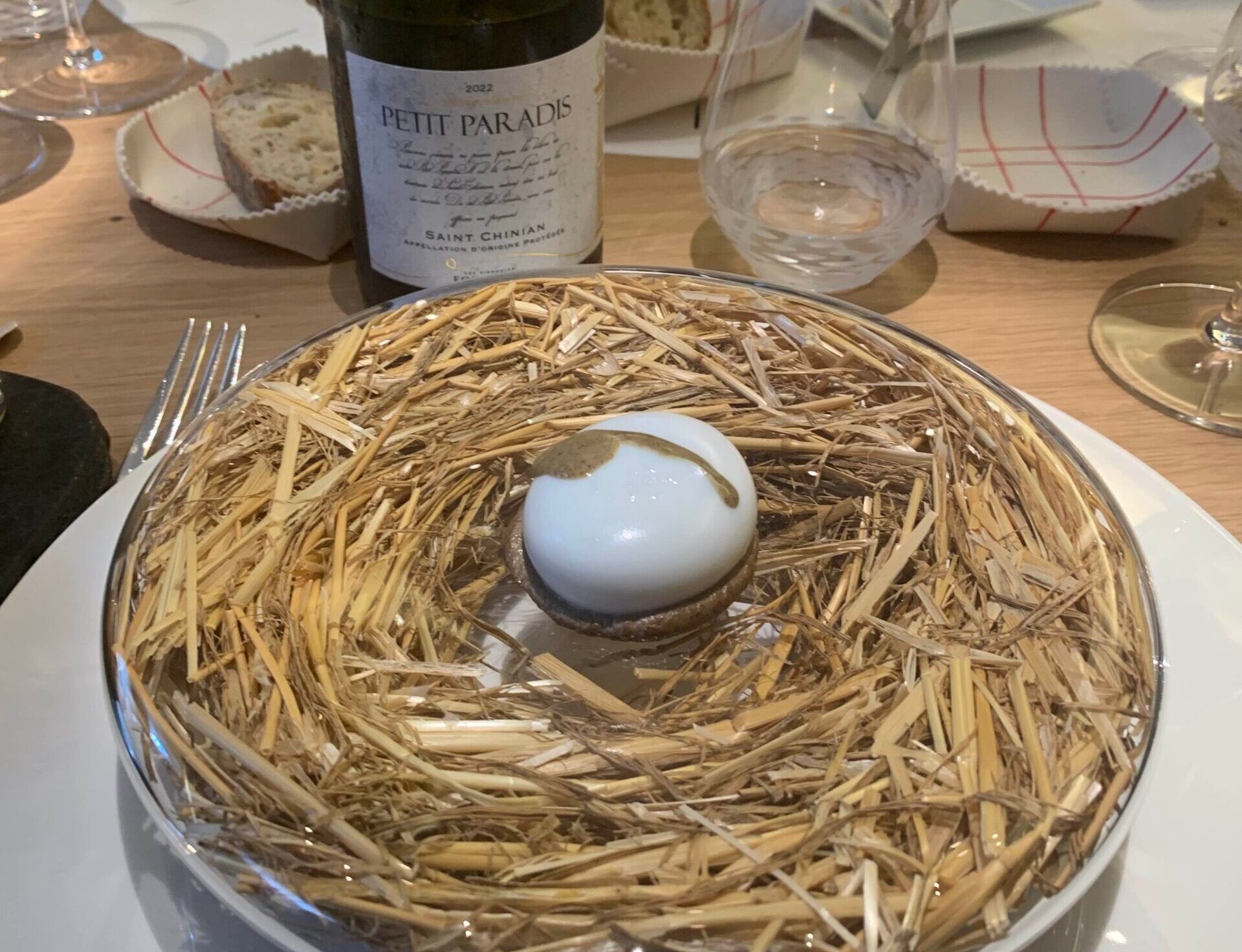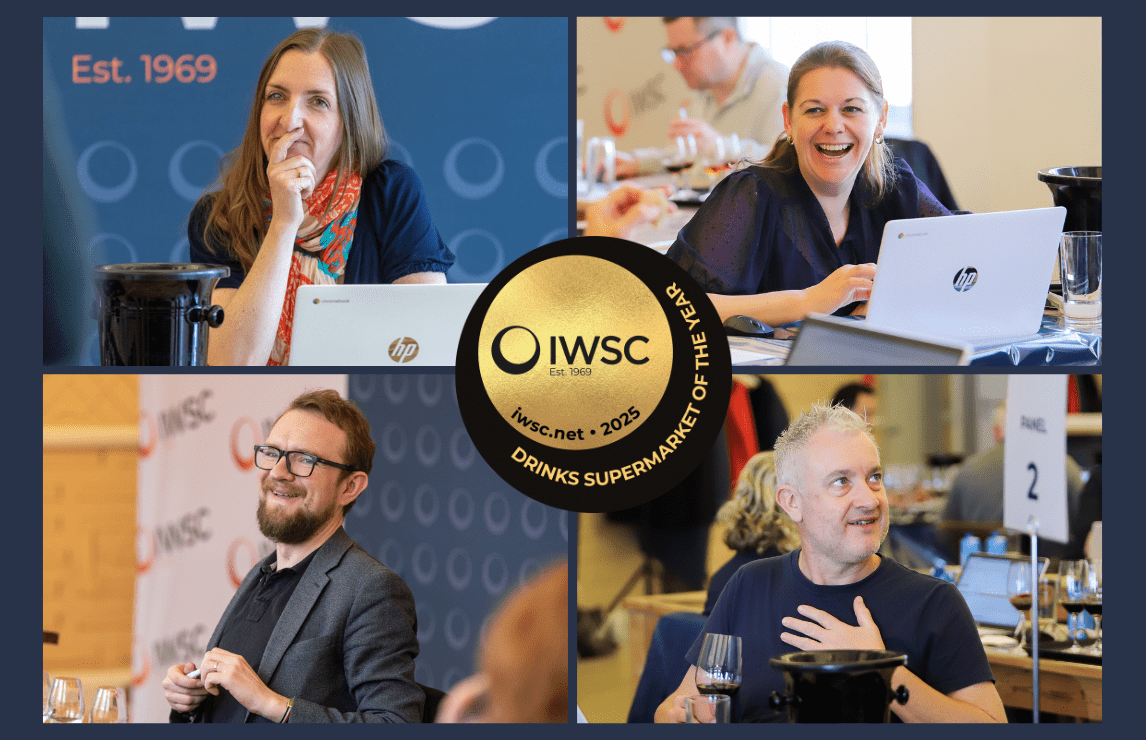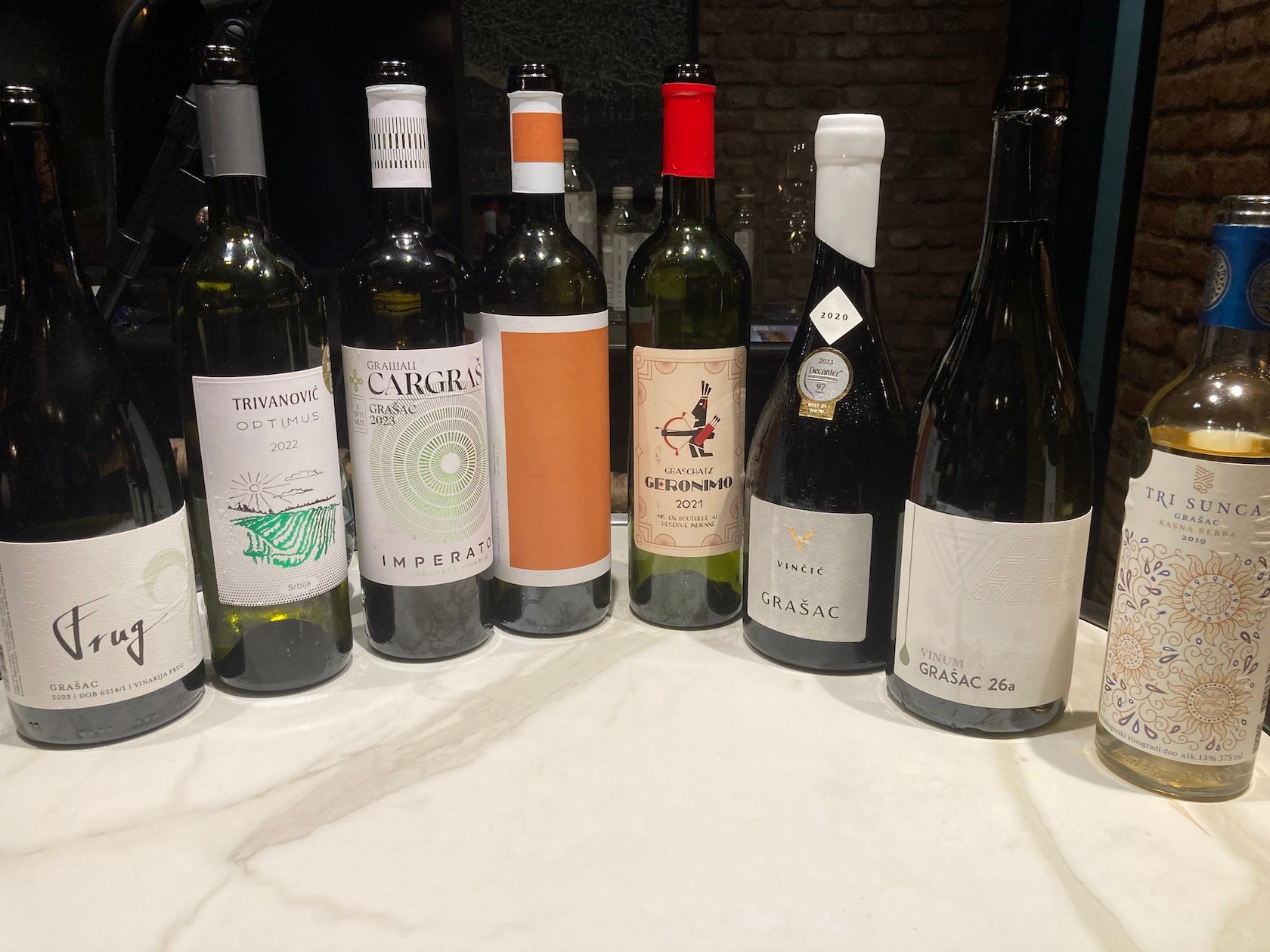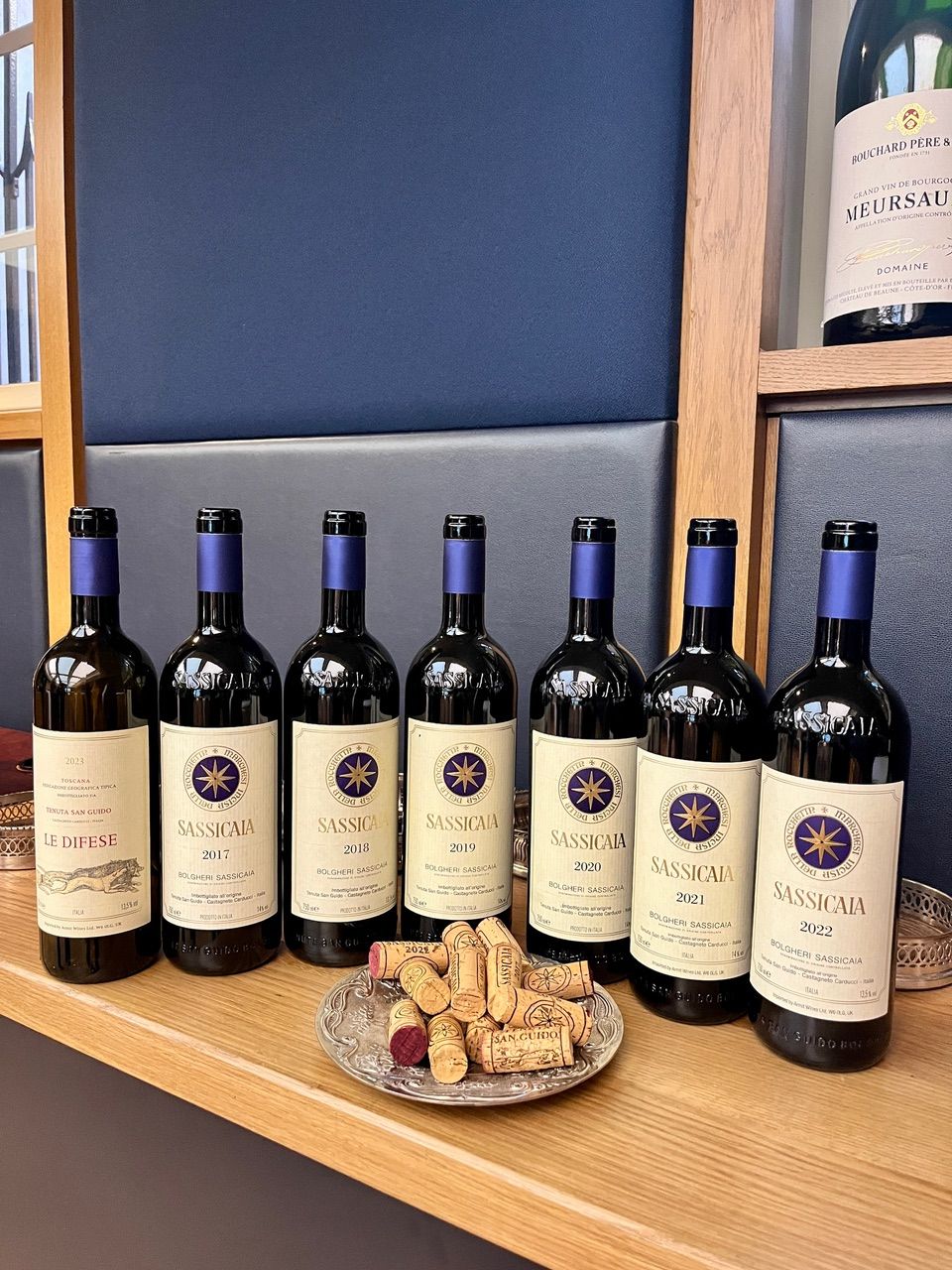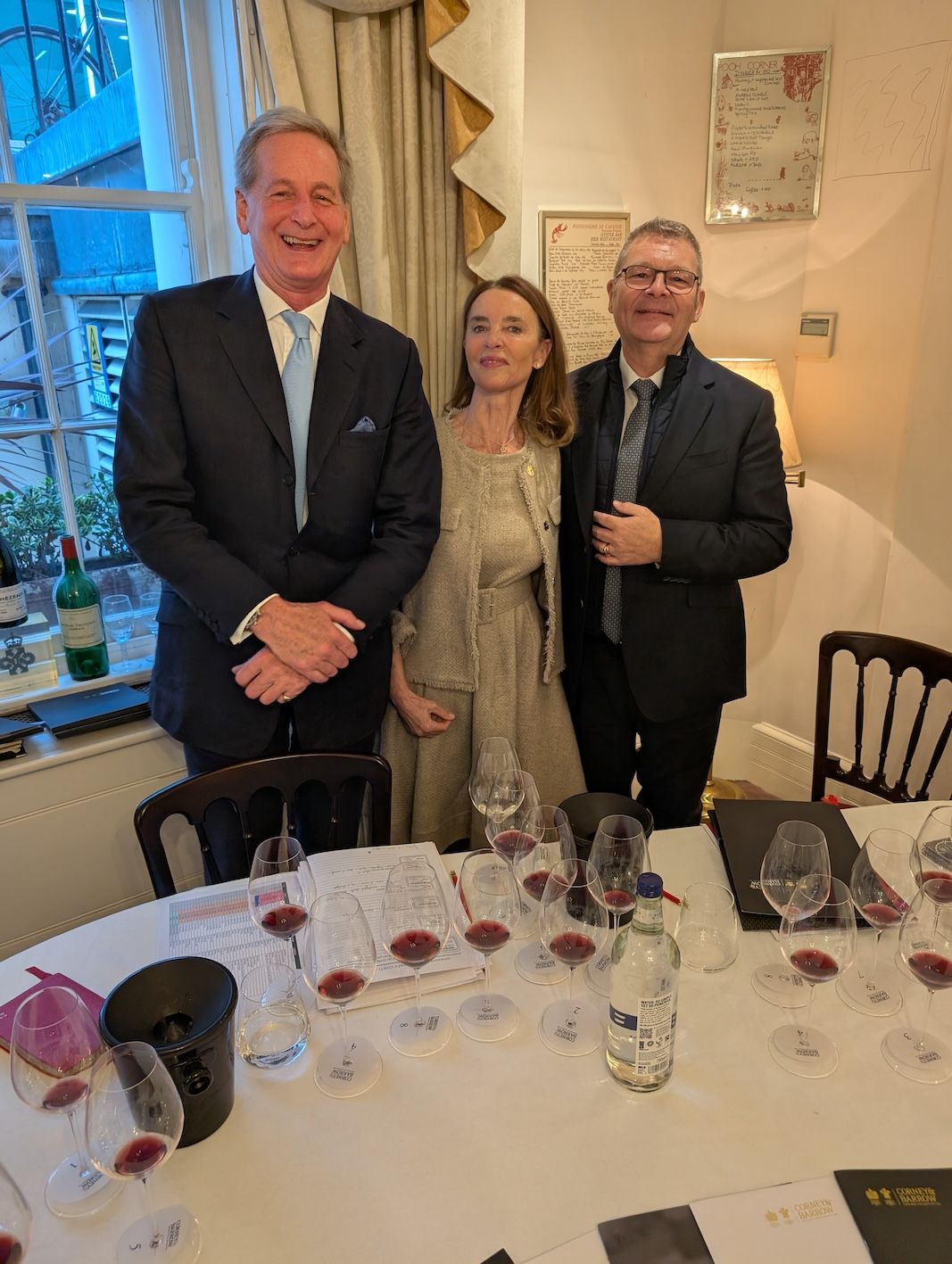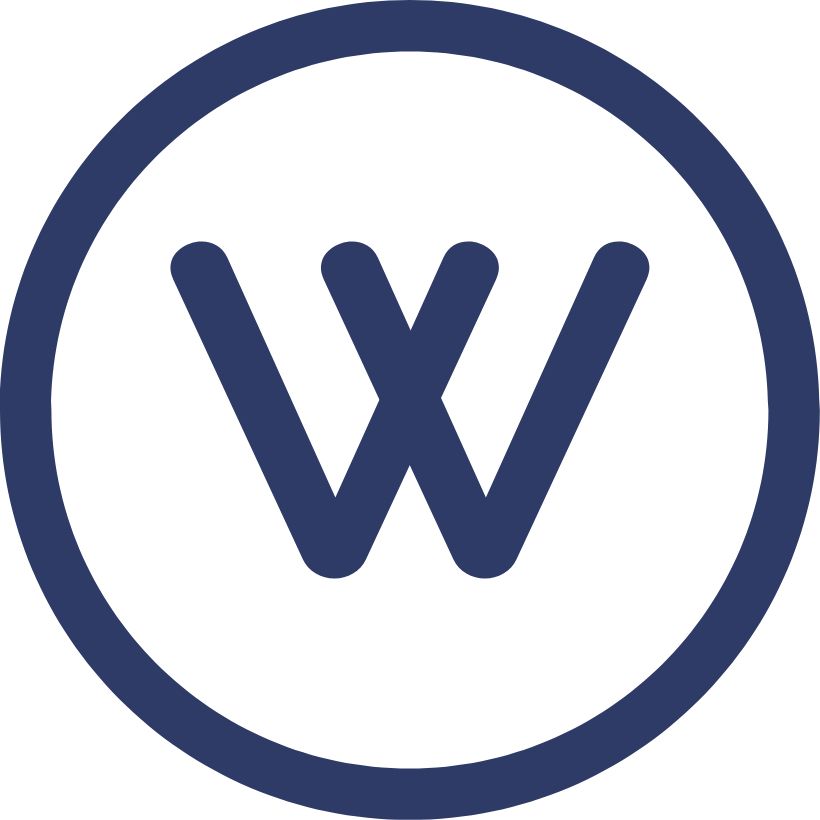“You have to applaud Goujon’s sheer inventiveness and imagination. It’s showy, but somehow not just for show,” writes Smart about Goujon’s Château Haut Gléon dinner.
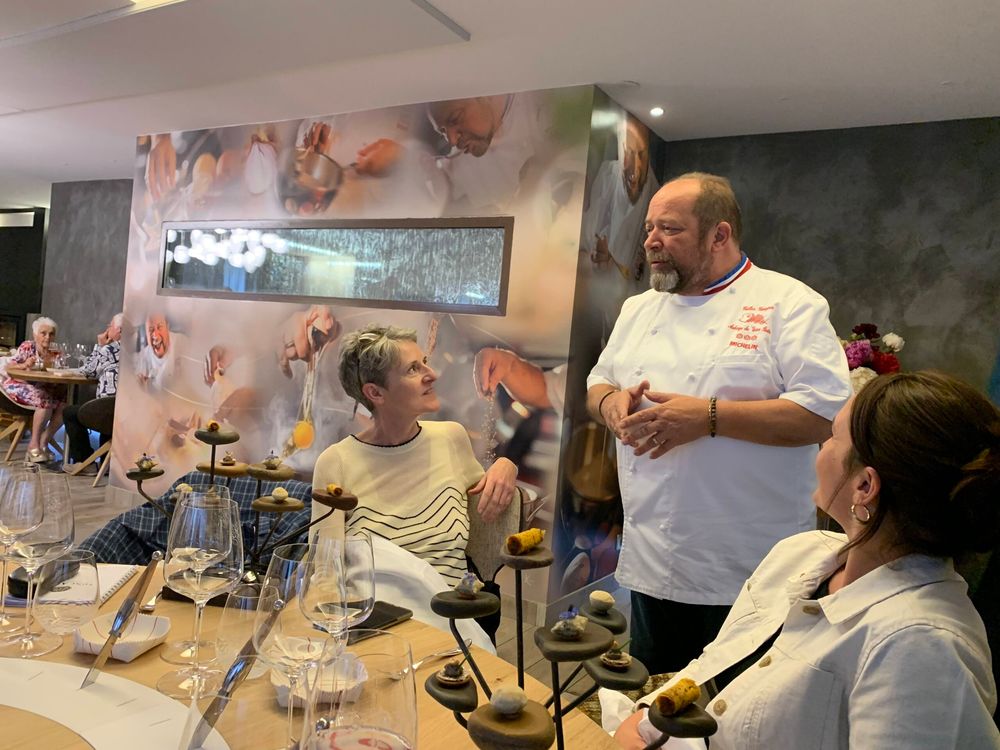
Gilles Goujon explains his approach to the Château Haut Gléon wines
That Languedoc is going premium is scarcely news. Today emergent appellations such as Larzac command some pretty fancy prices. And no visitor to the region, the biggest wine producer in France, can fail to be struck by the new energy – and high ambition – of the winemakers.
We’ve been invited close to Narbonne to visit giant wine producer Vignobles Foncalieu, and more particularly its flagship Château Haut Gléon which the group bought in 2012. Foncalieu is a sort of super-cooperative, owned by 800 growers with 5,000 hectares under cultivation. The winemaking is done by a busy central team led by the amiable Nathalie Estribeau with headquarters people also responsible for all the design and marketing.
One of revived Haut Gléon’s boasts is its proximity to a three-star Michelin restaurant, Gilles Goujon’s Auberge du Vieux Puits. After our tasting we are to head there for some pairings of the Foncalieu wines with what promises to be some of the most innovative, daring – and expensive – cuisine in the world. But more of that later.
There are a number of reasons why Languedoc is now making exciting wines, of which the quest for premiumisation is just one. Shifting consumer preferences is another, notably the irrepressible popularity of rosé in France and the rest of the world. There is also the need to go for disease-resistant varietals.
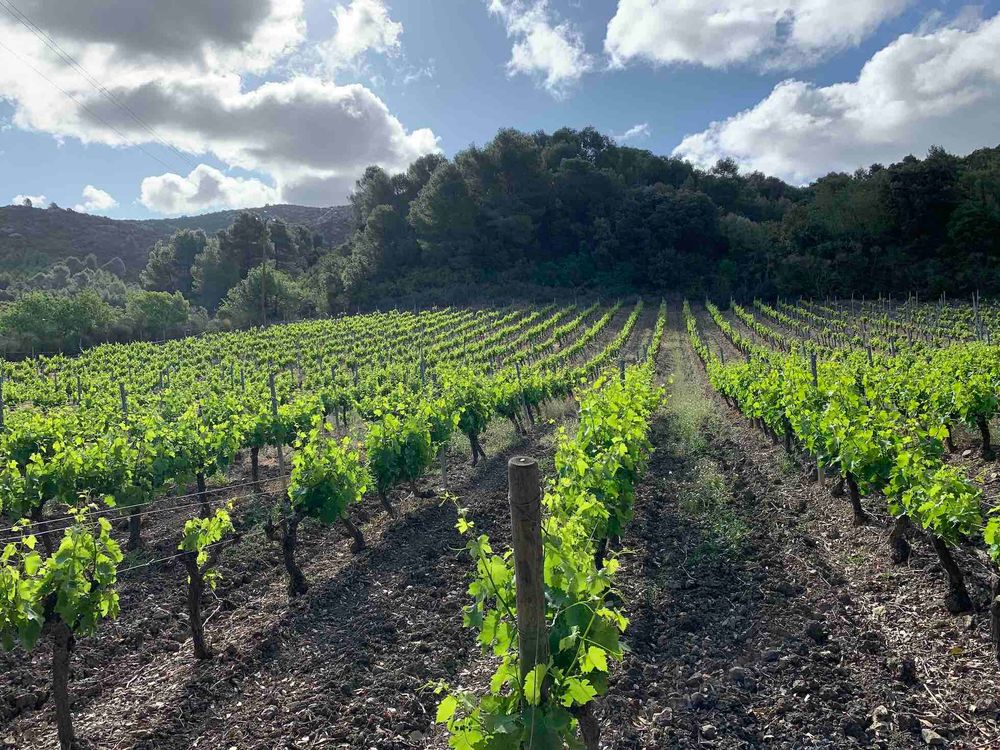
Adapting in the vineyard to the changing climate is key
But a walk around Château Haut Gléon’s vineyards reveals that climate change is perhaps the most urgent factor. Water has always been scarce. And the vines, some a hundred years old, don’t have to be told to dig deep. They naturally drive roots seven or eight metres into the earth to seek out moisture. Even so, Estribeau declares in May that she can’t remember when it rained properly here. So she is busy adapting.
At the bottom end the range among the Foncalieu wines (which are not produced at the château itself), there are several remarkable new products. First is a Rosé Piquepoul. At around €9 a bottle retail, this is not remotely going to appeal to a label-stroker. But for the legion of Piquepoul de Pinet fans this is a sure-fire hit. It is refreshing, ultra-approachable and has the precise colour-chart hue to appeal to them. (Incidentally, its name indicates the grape variety, Piquepoul, not the appellation Piquepoul de Pinet which does not produce rosé).
Moving up the range (but still not yet into the Château Haut Gléon’s wines) we have Nu.Vo.Té Rosé. With a fashionable label, this is a different style of rosé made with two new types of varietals, Artaban and Vidoc, which it’s hoped will cope better with disease. There is also a Viognier under the group’s Versant sub-brand. From north-facing slopes and with a lovely freshness, this is a passable Condrieu alternative at the fraction of the cost.
We also try an Alboriño, again a new grape to cope with water shortage.
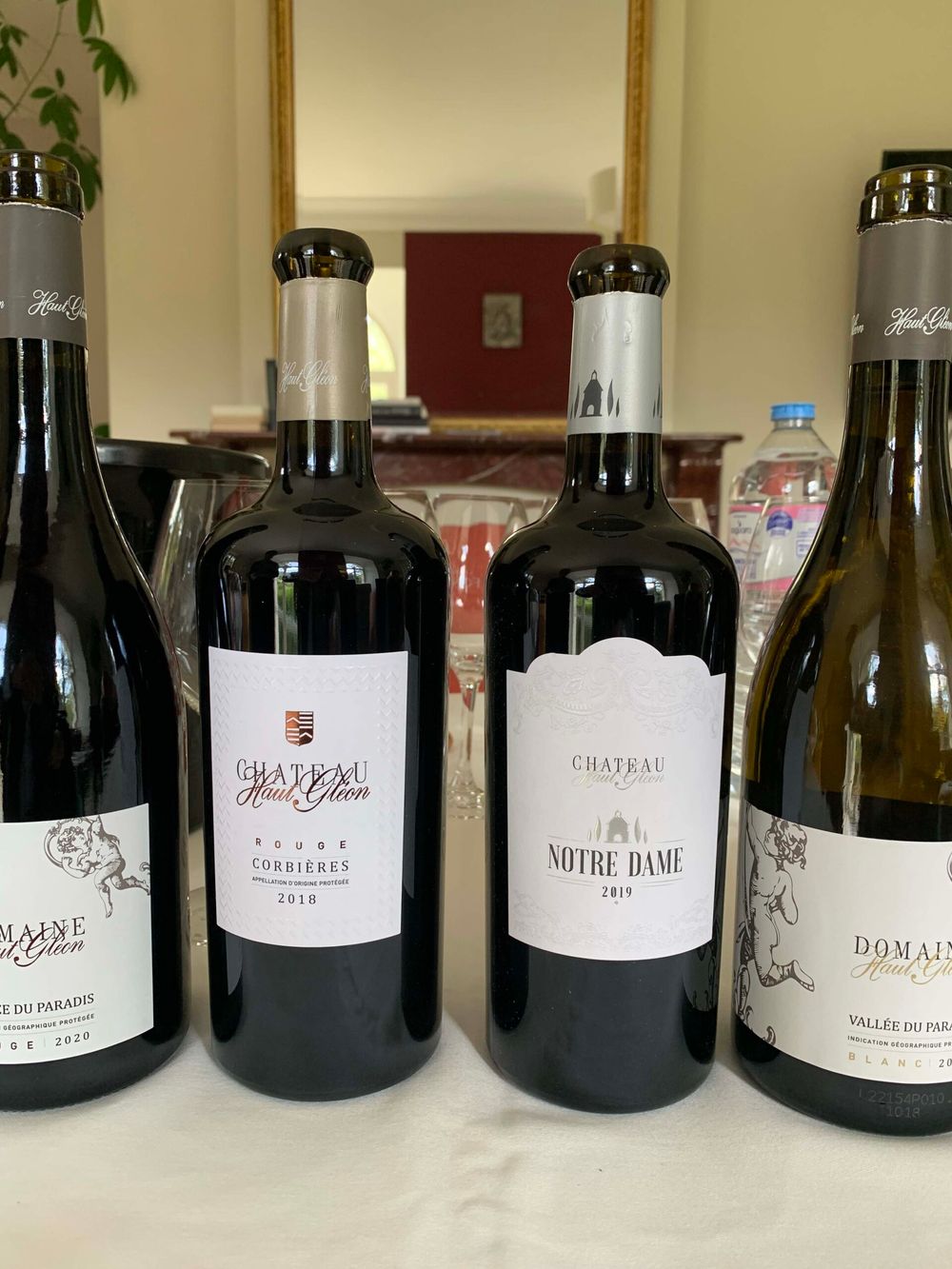
Château Haut Gléon wines
Moving up to the Château Haut Gléon wines themselves, it is the reds that shine for their value for money. Take the Domain Haut Gléon Rouge 2020 (IGP Vallée du Paradis). A Syrah and Grenache Noir blend, this has wonderful depth of flavour with blackberry and berry fruits, supple and nicely spicey. All for €13 a bottle retail. At €29 euros, the Cuvée Notre Dame, AOC Corbières is near the top of the range.
But, as everyone knows, wine is best savoured with food. And we head up the hill to the Auberge du Vieux Puits where the restaurant has chosen the wine pairings. My last take-it-for-the-team trip to a three-star Michelin restaurant was to the Dorchester in London earlier this year. But the French restaurant, where we are greeted by the chef, takes the dining experience to a whole new level. It’s adventurous, it’s challenging, it’s performative.
Simply listing the seven courses doesn’t remotely do them justice. There is oyster, baby goat, egg stuffed with truffle, fish, cheese, sorbet etc. And the freshness is impeccable. But it’s the drama that Gilles Goujon brings to each dish that matters.
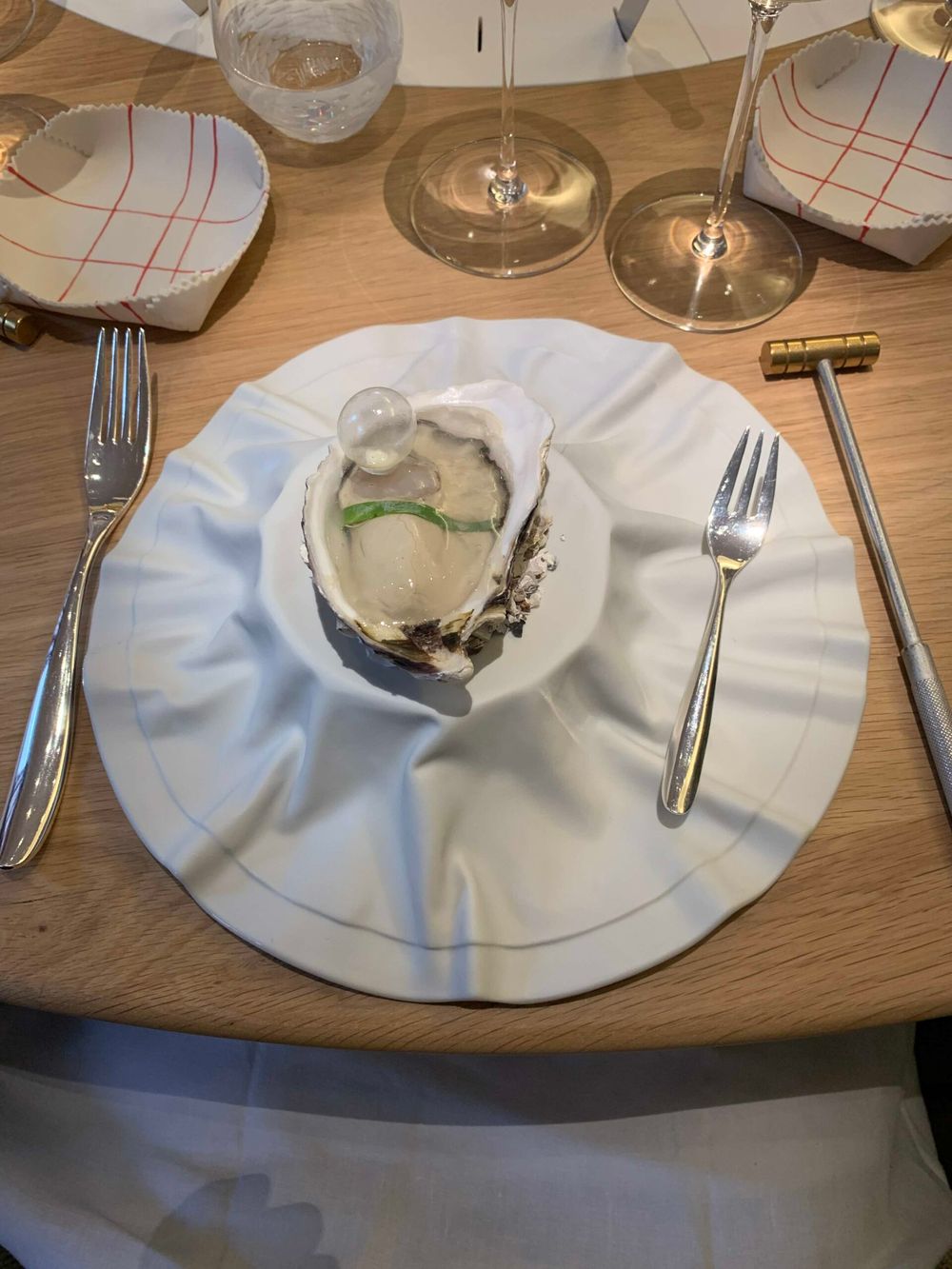
Our first course is described as a ‘Huître Tarbouriech perlée’. It’s an outsized oyster, almost steaky in texture. But the novelty is the hard, clear bubble on top: this is cracked using a small hammer to release a light waft of wood smoke. The paring is with a Corbières Haut Gléon Rosé 2022.

Then there is the chef’s signature dish, the truffle-injected egg, served on a dish of straw accompanied by a special brioche and what lesser mortals might call ‘mushroom soup’. The paring here is with Saint Chinian Petit Paradis 2022. This is 50% Grenache Blanc, 30% Marsanne and 20% Rolle (as the French have to now call Vermentino). With a bouquet of white fruit with a long, spicy finish, this is remarkable value for around a tenner.
You have to applaud Goujon’s sheer inventiveness and imagination. It’s showy, but somehow not just for show. Foncalieu is likewise showing a creditable inventiveness and it also goes big on value for money.
